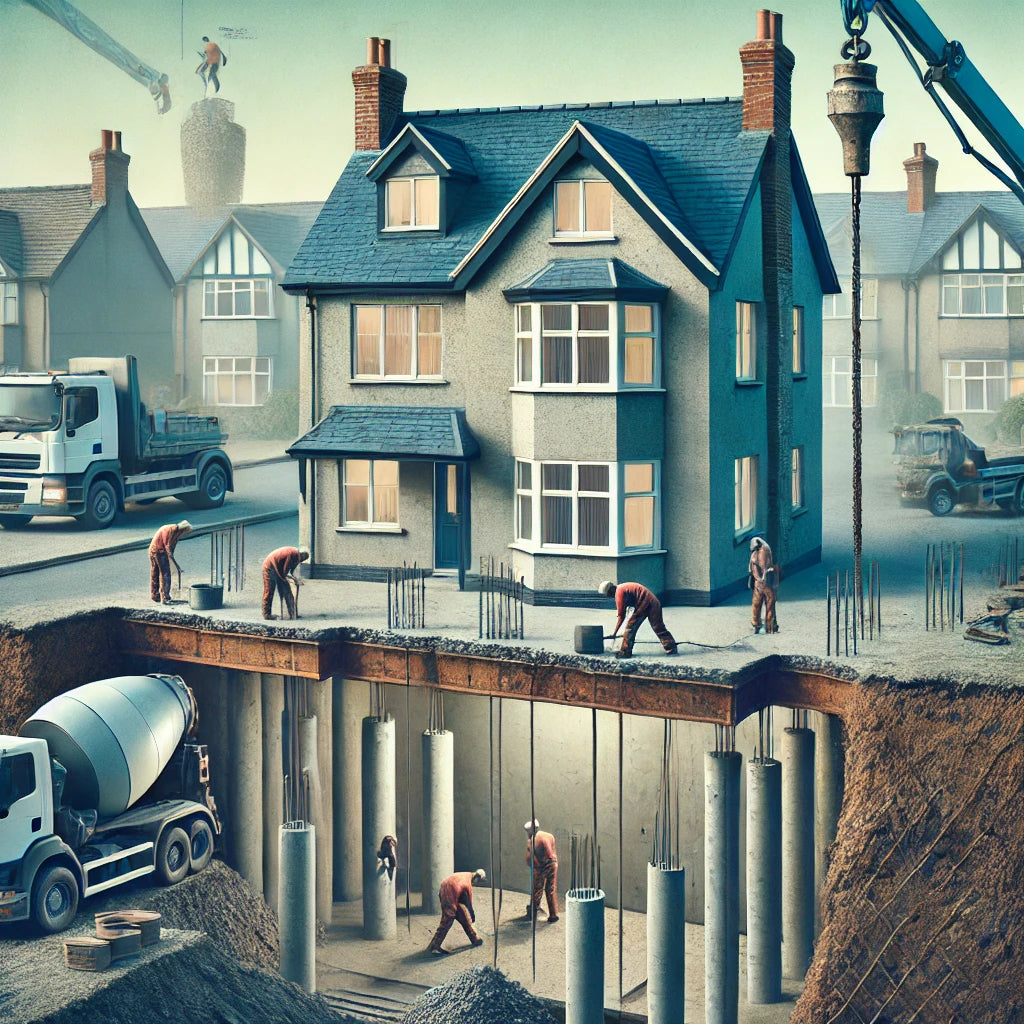
The Ultimate Guide to Underpinning: What Every Homeowner Should Know
Underpinning is a crucial construction technique used to stabilise buildings experiencing subsidence or structural issues. This guide will help you understand everything you need to know as a homeowner about underpinning, from the methods used to the costs involved.
What is Underpinning?
Underpinning is the process of strengthening the foundation of a building. This is often necessary when the original foundation is not strong enough to support the building due to factors like soil movement, subsidence, or the addition of extra floors.
Why Underpinning is Needed
When the ground beneath a property shifts, it can cause the building to become unstable. Underpinning reinforces the foundation to ensure the structure remains safe. Common signs that your home may need underpinning include cracks in the walls, sloping floors, and doors or windows that stick.
Methods of Underpinning
- Mass Concrete Underpinning: The most traditional method, involving digging below the foundation and filling with concrete to create a new, stronger base.
- Beam and Base Underpinning: Uses a concrete beam to transfer the load to mass concrete bases strategically placed.
- Mini-Piled Underpinning: Suitable for sites with restricted access or variable soil conditions. It involves driving piles into the ground and capping them with a concrete beam.
- Soil Strengthening: Involves injecting a special resin into the ground to improve soil stability.
Costs of Underpinning
The cost of underpinning can vary significantly, typically ranging from £6,000 to £21,000. Factors influencing the cost include the method used, the extent of the work required, and additional repairs needed due to subsidence.
Buying a House with Underpinning
Buying an underpinned house shouldn't pose significant issues if a full structural survey indicates no further problems. However, you might face higher insurance premiums due to the property's history of structural issues.
Does Underpinning Devalue a Property?
While underpinning can stabilise a property, it may also reduce its value by 20% to 25%. Nevertheless, it can sometimes make a house more stable than those without previous subsidence issues.

